
The gravity separation method has the advantages of low cost, environmental friendliness, and simple operation, making it an important method for the processing and production of various minerals. Gravity separation, also known as gravity concentration or gravity separation for short, mainly uses gravity to separate minerals with different densities. This method relies on the principle that minerals with a higher density will settle under the force of gravity faster than less dense minerals. The following will introduce four common mineral gravity separation methods for you, namely: jigging gravity separation, shaking table gravity separation, spiral chute gravity separation and dense medium separation.
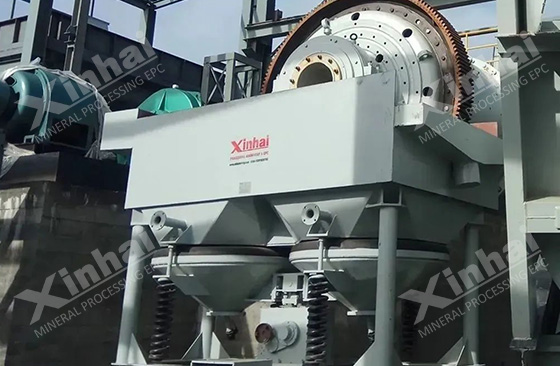
Jig gravity separation of particles by density by pulsating water flow. Heavier particles sink to the bottom more quickly, while lighter particles rise to the top. A jig is a gravity separation device consisting of a container or trough filled with a layer of granules. The oscillating action creates a pulsating water flow that stratifies the particles according to their density.
The process of jigging reselection includes the following steps:
1. Pretreatment: first crush and grind the ore or material into proper size.
2. Gravity separation: The crushed material is introduced into the gravity separation tank to generate pulsating water flow. Gravity separators are usually equipped with screens or grids at the bottom to prevent the bed of particles from being washed away during pulsation.
3. Stratification: As the pulsating water flows through the particle layer, heavier and denser particles sink to the bottom more quickly, while lighter particles are carried upward.
4. Collection: According to the density of the particles and their position in the stratified bed, the separated particles are collected from different positions of the jig.
Jig gravity separation method is effective at handling particles of various sizes and can be used to concentrate valuable minerals of various densities. It is especially suitable for processing coarse-grained ores or ores with high density contrast, such as gold, tin, tungsten and iron ore.
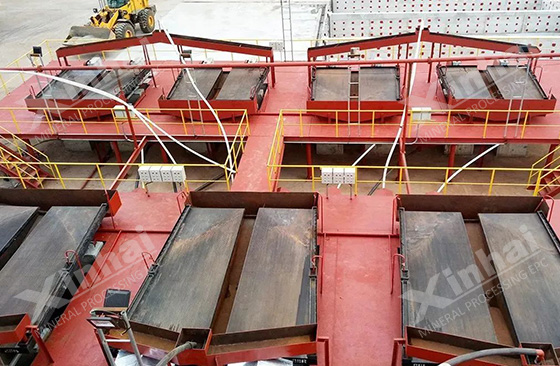
A shaker consists of a flat, inclined surface, usually rectangular, mounted on a support structure. The table generates reciprocating motion through horizontal shaking or vibration. This shaking action stratifies the particles according to density and size, separating heavier mineral particles from lighter host rock material.
The process of gravity separation using a shaker is as follows:
1. Pretreatment: first crush and grind the ore into proper size.
2. Adjust the shaker: Place the prepared materials on the shaker. The surface of the shaking table is covered with transverse grooves or ridge-like structures to fix and trap heavier mineral particles.
3. Shaking: The table starts to move, usually through mechanical devices or vibration. Shaking moves the pellet laterally across the table.
4. Stratification: As the particles move across the table, they are stratified according to density and size. Heavier particles sink to the bottom and are trapped by the grooves, while lighter particles are carried away by the flowing water.
5. Collection: The separated minerals are collected from different positions on the table, depending on their density and position in the stratified bed.
The shaking table is used in the separation of ores with a wide range of particle sizes, and it is usually used to process precious metals such as gold, silver and platinum group metals. Because it does not require the use of chemical reagents or high energy inputs, the simplicity of design and ease of operation make it the main choice for medium to large scale processing plants.
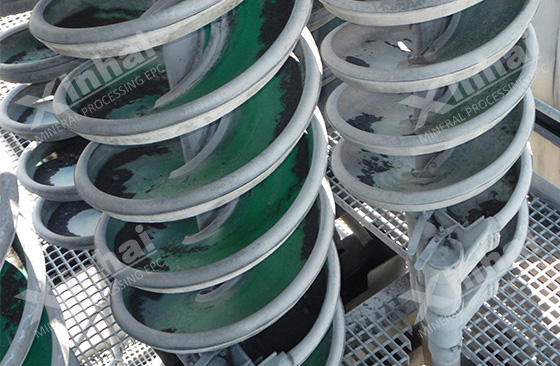
Spiral chute gravity separation is a gravity concentration method that uses a spiral chute for separation. Spiral chute is a equipment commonly used to separate particles according to their density differences. This method is usually used to process fine-grained ores, especially for ores containing fine minerals, and has a better separation effect.
The process of spiral chute gravity separation is as follows:
1. Pretreatment: First crush and grind the ore into proper size.
2. Feeding: Put the prepared ore evenly into the feeding port of the spiral chute.
3. Movement: In the spiral chute, the ore slides down along the spiral chute wall. Due to the helical design of the trough, the particles are separated under the action of centrifugal force and gravity.
4. Stratification: The heavier ore will move outward and settle to the bottom of the tank to form a rich ore layer, while the lighter gangue will move closer to the tank wall to form a tailings layer.
5. Collection: The separated rich ore and tailings are collected from different positions of the spiral chute.
Spiral chute gravity separation can be used to process ore containing fine-grained minerals, especially for the separation of fine-grained minerals in ore. It is commonly used to process ores such as gold, tin, iron, chromium, lead, zirconium and tungsten.
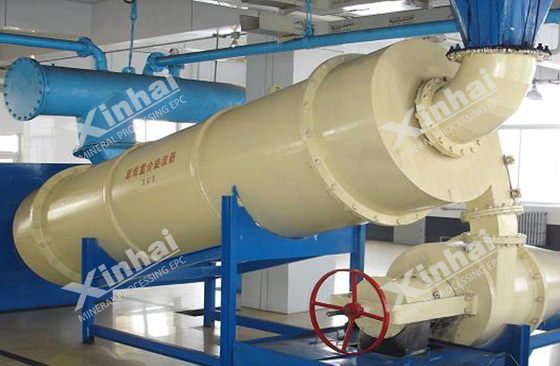
In dense media separation, a dense medium (usually a fine-grained ferrosilicate or magnetite suspension) is used to form an intermediate density fluid. Minerals with a higher density will sink in this heavy medium, while minerals with a lower density will float. This technology is widely used in the methods of pre-selection, upgrading of ore grade and recovery of valuable minerals from different ore deposits.
The dense medium separation process is as follows:
1. Feed material preparation: ore or mineral-containing materials are crushed and ground.
2. Dense medium preparation: prepare dense medium by suspending fine particles of ferrosilicate or magnetite in water.
3. Immersion: Immerse the ore in a dense medium. Minerals with a higher density will sink and become trapped in the heavy medium, while minerals with a lower density will float and remain in the lighter part.
4. Separation: The dense medium is then subjected to various technical treatments to separate the two fractions according to density. In a heavy medium cyclone, heavy medium is pumped through the cyclone and the denser and lighter fractions are separated by centrifugal force.
The density media separation process is especially suitable for separating minerals with large differences in density. It is commonly used to process diamonds, coal, iron ore and certain base metal ores.
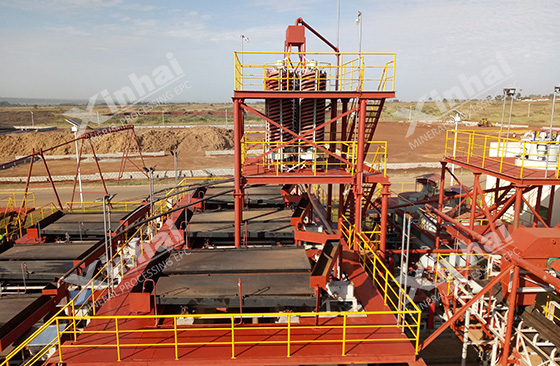
The above content is about four commonly used gravity separation methods: jigging gravity separation, shaker gravity separation, spiral chute gravity separation and dense medium separation. The selection of gravity separation technology should be based on the type and characteristics of the ore. When separating ore with complex components, it is necessary to combine other beneficiation methods other than gravity separation, such as magnetic separation and flotation. Xinhai Mining suggested to conduct mineral processing test in order to determine the appropriate gravity separation process and equipment to improve the mineral processing efficiency and concentrate recovery rate.
To find out more about our products and solutions, please fill out the form below and one of our experts will get back to you shortly.